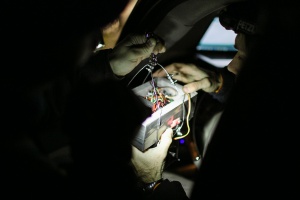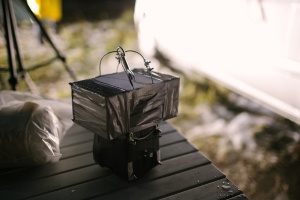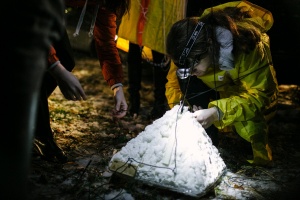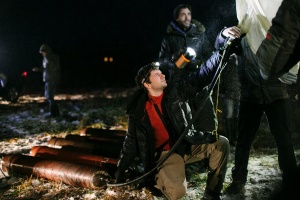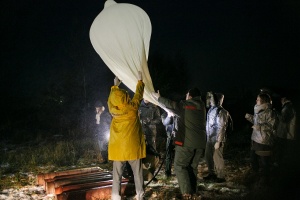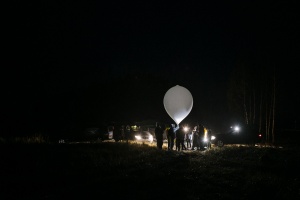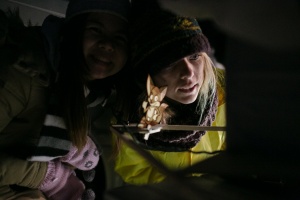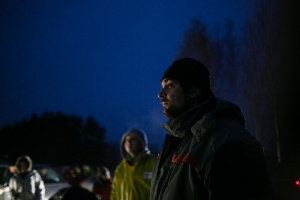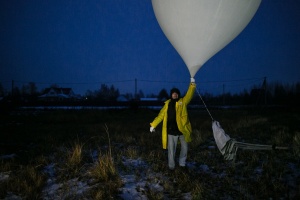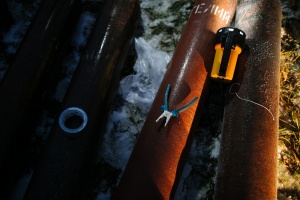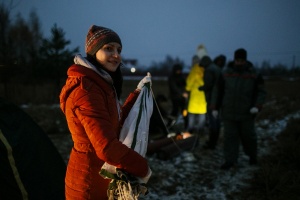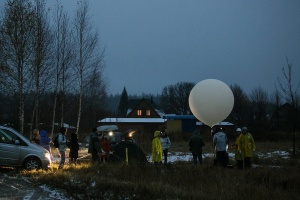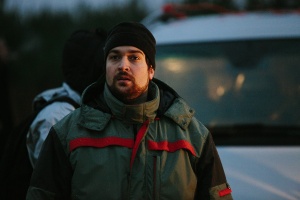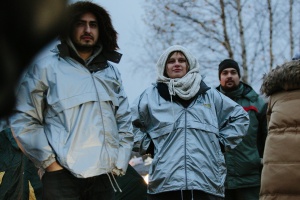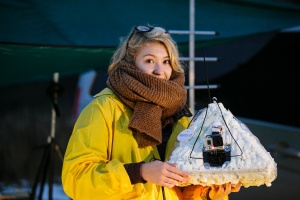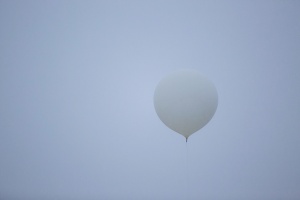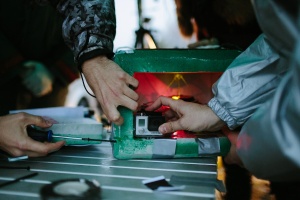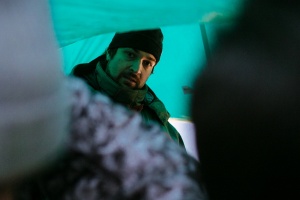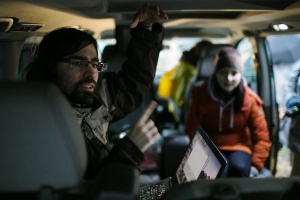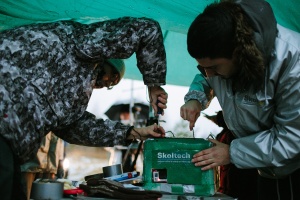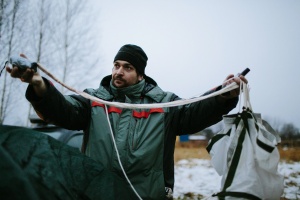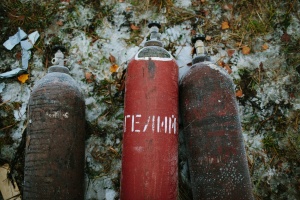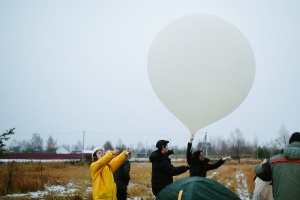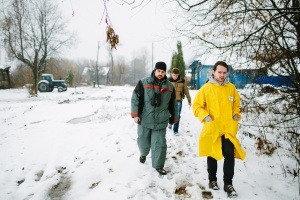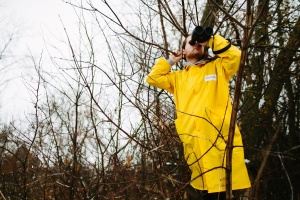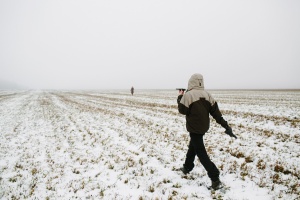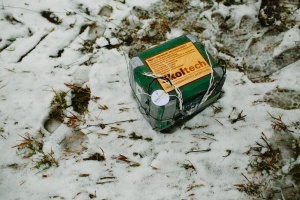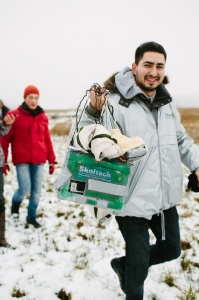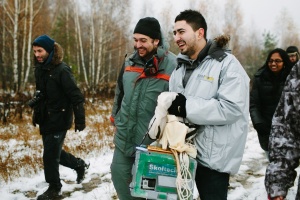This could be story about adventure.
At dawn, the muddy field between the tiny villages of Dureevskaya and Fedeevskaya some 200 km south east of Moscow, was far from welcoming. Little frozen pools and slushy patches greeted Italian-born Skoltech professor Alessandro Golkar, his research assistants and 18 Skoltech space students. The sky showered the group with frozen rain and wet snow. The half awake scientists traveled for 6 hours from the Russian capital to this particular spot. Here, aerospace authorities and nature converged to create an opportunity. Here they will be allowed to conduct an experiment that will render all air traffic in the area impossible. Here they hoped that their sophisticated engineering creations would not end up in a lake or a river. Their goal: launch stratospheric balloons carrying experiments and HD cameras, reach the edge of space and safely collect the platforms after they land back on Earth.
This could also be an account of numbers, telemetry and data.
Of careful engineering, design and construction and a once in a lifetime educational experience.
4 stratospheric balloons filled with lighter-than-air helium were launched. One of the balloons reached an altitude of 33 km. Some traveled for more than 2 hours and over a distance of 200 km. Then, as temperature fell to -50°C and pressure reached below 0.1 atmosphere, the balloons diameter expanded to over 9 meters. They could no longer carry their payloads. The bloated white creatures imploded and began falling back to the ground.
Then again, there is the tale of the search and rescue operation.
The platforms, a final project for the Space Systems Engineering course, plummeted down to Earth. Payloads and experiments such a lithium-ion battery, a composite material, a small satellite reactor, and a stabilizer hurtled towards Earth. A small wooden fox, the Skoltech Space lab newly anointed mascot, also joined the plunge. Their descent was slowed by parachutes. And then the nerve wrecking and gratifying mission of locating the precious experiments before the woods get too dark and impassable. A blue globe, white pyramid and green box have been recovered within 24 hours. The fourth component of the university’s space mission was even more stubborn.
“If you had told me three years ago that I’d be wading through icy puddles in Russia in search of a box full of instruments that we launched to space I’d have probably said that you’re joking”, Golkar, who recently won a prestigious international award and had studied at MIT before relocating to Moscow, grinned. “Yet this is very serious work. And fun.”
But perhaps images are best suited to tell the story of this journey.
Photographer Alexei Kalabin took photos throughout a night and a day, from launch through search to recovery. Here is the story of the first Skoltech Space Race.
Technical support: Denis Efremov nearspace.ru





